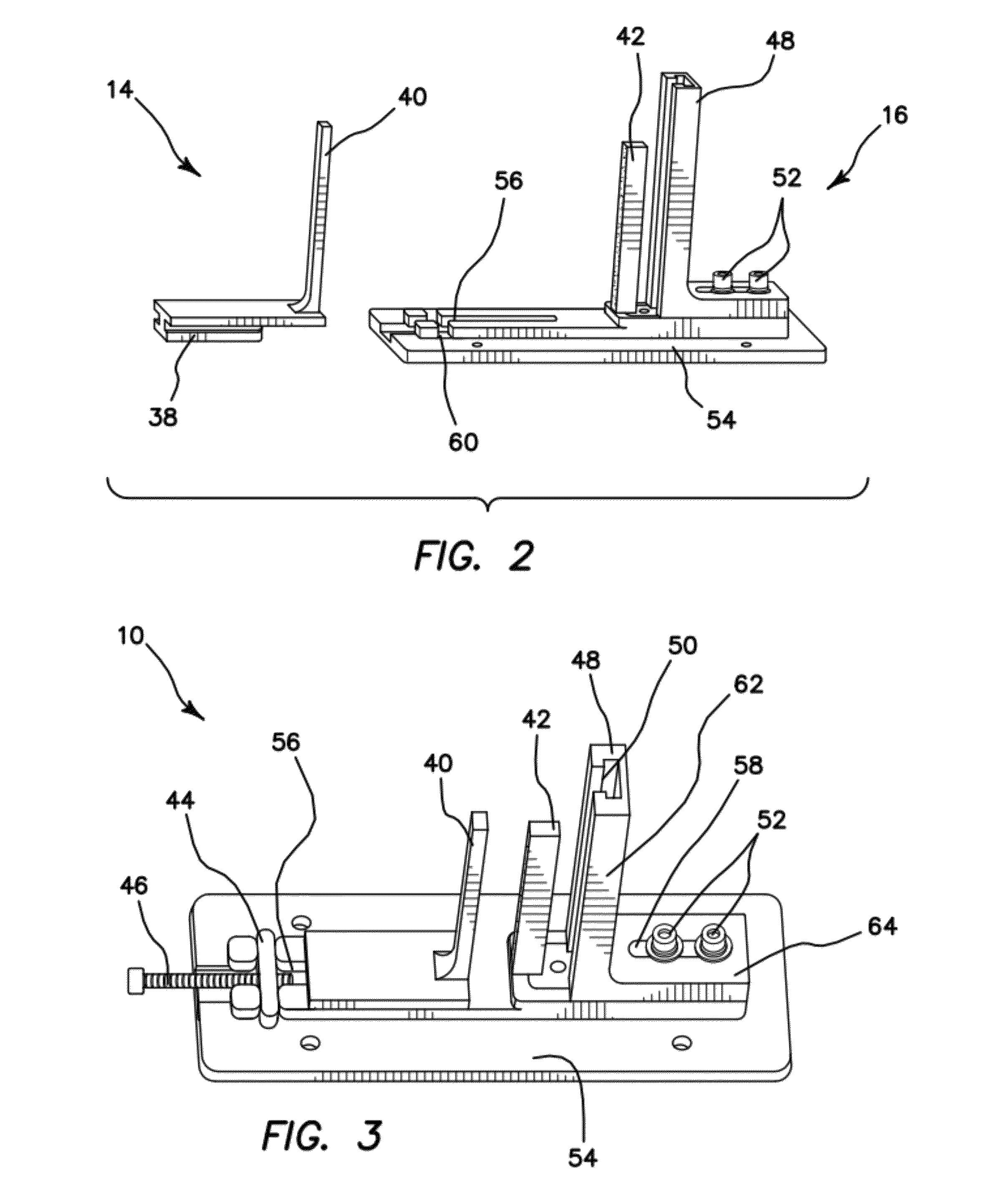Apparatus and method for cutting costal cartilage
a costal cartilage and apparatus technology, applied in the field of medical equipment, can solve the problems of reducing the skill and time required to fashion cartilage slices, increasing uniformity, etc., and achieve the effects of reducing skill and time, increasing the uniformity of cut specimens, and increasing uniformity
- Summary
- Abstract
- Description
- Claims
- Application Information
AI Technical Summary
Benefits of technology
Problems solved by technology
Method used
Image
Examples
Embodiment Construction
[0029]The current device comprises three main components, a cutting jig 12 seen in FIGS. 1A and 1B, a slide member 14 and a base 16 seen in FIGS. 2 and 3. When the slide member 14 and base 16 are coupled together as seen in FIG. 3 and as further described below, a specimen assembly 10 is formed.
[0030]Turning now to the cutting jig 12 and FIGS. 1A and 1B, it can be seen that the cutting jig 12 comprises two substantially U-shaped halves, namely a top half 18 and a bottom half 20. The bottom half 20 further comprises a substantially “T” shaped jig key 30 disposed along one of its outer edges. The jig key 30 helps to guide the cutting jig 12 through the specimen assembly 10 as is further detailed below. Disposed between the top half 18 and the bottom half 20 is a pair of parallel blades 22 separated by a pair of identical aluminum spacers 24. The halves 18, 20 effectively sandwich the pair of blades 22 and spacers 24 there between and due to their substantial U-shape, define an apertur...
PUM
 Login to View More
Login to View More Abstract
Description
Claims
Application Information
 Login to View More
Login to View More - R&D
- Intellectual Property
- Life Sciences
- Materials
- Tech Scout
- Unparalleled Data Quality
- Higher Quality Content
- 60% Fewer Hallucinations
Browse by: Latest US Patents, China's latest patents, Technical Efficacy Thesaurus, Application Domain, Technology Topic, Popular Technical Reports.
© 2025 PatSnap. All rights reserved.Legal|Privacy policy|Modern Slavery Act Transparency Statement|Sitemap|About US| Contact US: help@patsnap.com



